Introduction
In today’s fast-paced, hyperconnected world, the line between work and personal life is becoming increasingly blurred. Smartphones, remote working platforms, and digital communication tools have revolutionised the way we work, offering unprecedented flexibility and opportunities. However, this progress has also brought new challenges. Many people now find themselves answering emails late into the night, struggling to switch off from work, and experiencing higher levels of stress and burnout than previous generations.
The concept of balance has evolved over time. In the industrial era, balance was about leaving the factory floor and enjoying personal time at home. In the modern digital era, balance is more complex. Work travels with us everywhere we go — into our bedrooms, our holidays, even our weekends with family. This constant accessibility demands new strategies for creating boundaries and redefining what wellbeing means in a world that never truly “switches off.”
This lifestyle guide aims to explore the importance of balance in today’s society, examining the consequences of imbalance, highlighting the pillars of wellbeing, and offering practical strategies for individuals and organisations. Through this, readers can gain insights into how to build a lifestyle that harmonises ambition with self-care, creating not only a successful career but also a life worth living.
Section 1: Understanding Work-Life Balance
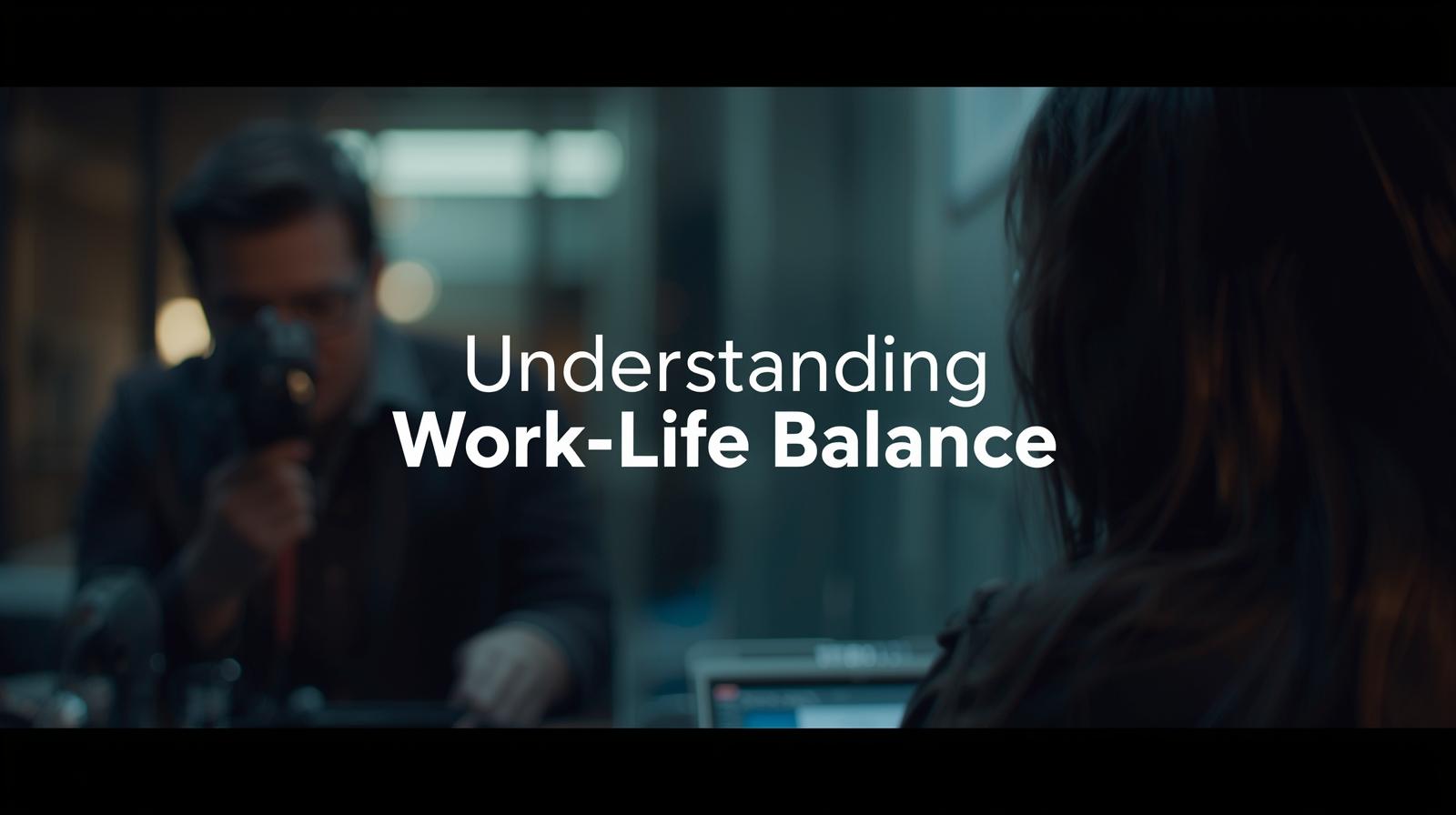
Work-life balance is a term often used but not always clearly understood. At its core, it refers to the equilibrium between the demands of one’s career and the needs of one’s personal life. However, balance does not mean equal time spent on each; rather, it means achieving harmony between the two so that neither overwhelms the other.
Defining Work-Life Balance
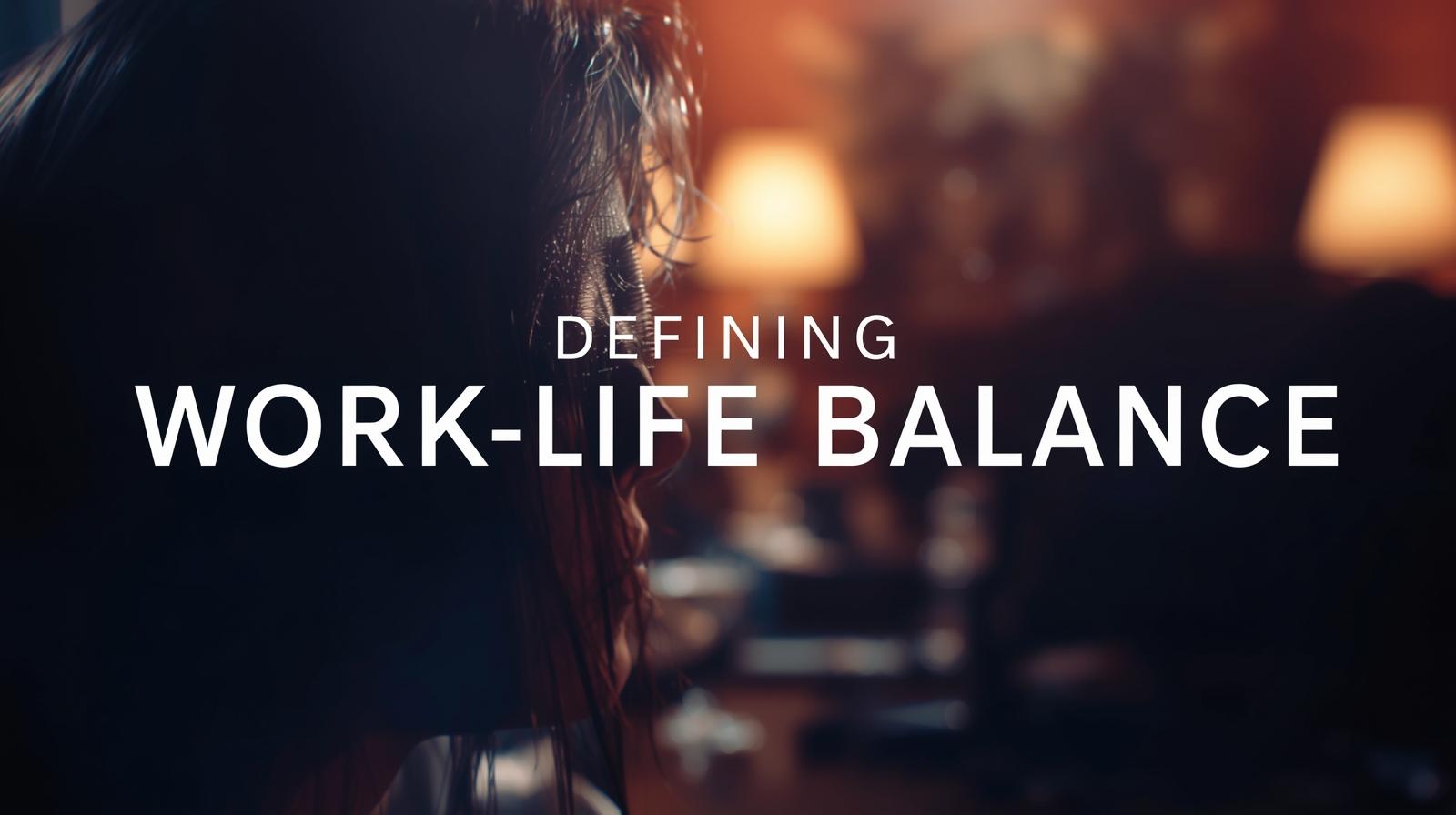
The definition of work-life balance varies depending on cultural values, personal circumstances, and professional responsibilities. For some, balance means being able to work flexible hours and still pick their children up from school. For others, it is about having enough energy left after work to pursue hobbies, maintain fitness, or nurture relationships. The key is that balance is highly individual and can change throughout different stages of life.
Common Misconceptions
Many people assume that balance means dividing time equally between work and personal life, but this is unrealistic. There will be periods when work demands more attention, such as during a big project, and times when personal life takes priority, such as during family milestones or health concerns. Balance is not about rigid equality; it is about adaptability and awareness.
Another misconception is that achieving balance requires reducing work hours. In reality, balance often depends more on how effectively one manages energy, sets boundaries, and makes intentional choices. Someone working long hours may still feel balanced if they enjoy their job and protect their time for rest and relationships.
Cultural Perspectives on Balance
Work-life balance also looks different across cultures. In many European countries, shorter working weeks and generous holidays reflect the belief that leisure and family life are just as important as professional achievement. By contrast, in cultures with strong emphasis on career success, such as Japan or the United States, longer working hours are often the norm, sometimes at the expense of wellbeing.
In the UK, the shift towards remote work has created a mixed picture. While some enjoy newfound flexibility, others feel increased pressure to always be “available.” This highlights that balance is not just about hours worked but about the quality of rest, the presence of boundaries, and the ability to fully disengage from professional tasks during personal time.
The Evolution of Work-Life Balance
Historically, work and home life were separate domains. Farmers, for example, worked the land but were still physically present in their communities and families. The industrial revolution introduced fixed hours in factories, giving rise to the concept of “clocking in and out.” With the digital revolution, however, these boundaries began to dissolve.
The rise of smartphones, video conferencing, and cloud-based work means that people can now work from anywhere at any time. While this offers great flexibility, it also leads to an “always-on” culture where many struggle to switch off. As a result, the idea of balance has shifted from physical separation of work and home to psychological separation — learning how to disconnect mentally even when technology makes it easy to stay connected.
Section 2: The Cost of Imbalance

When work takes precedence over personal wellbeing for prolonged periods, the effects can be significant and far-reaching. Imbalance may not always be immediately visible, but it accumulates quietly until it manifests in physical illness, strained relationships, or reduced effectiveness at work.
Impact on Mental Health
Stress is one of the most common consequences of poor work-life balance. Prolonged stress can lead to anxiety, depression, and burnout. According to the World Health Organization, burnout is now officially recognised as a workplace syndrome characterised by chronic stress, exhaustion, cynicism, and reduced professional performance. Individuals experiencing burnout often find themselves emotionally drained, unable to meet constant demands, and detached from their work and personal lives.
The lack of time for self-care activities such as rest, exercise, and social connection can worsen these mental health outcomes. For instance, an employee working 60 hours a week may neglect hobbies, friendships, and relaxation, leading to feelings of isolation and resentment. Over time, this erodes overall happiness and diminishes life satisfaction.
Impact on Physical Health
The body is not immune to the pressures of imbalance. Stress hormones such as cortisol increase when people are constantly in “work mode.” Elevated cortisol over time contributes to serious health problems, including high blood pressure, heart disease, obesity, and weakened immune function.
Additionally, long hours spent sitting at desks without adequate breaks can cause musculoskeletal problems, eye strain, and fatigue. Lack of sleep — often sacrificed when people stay up late finishing tasks — has also been linked to reduced cognitive functioning, weight gain, and a greater risk of chronic illnesses such as diabetes.
Impact on Relationships
Work-life imbalance often spills over into family and social life. When someone spends most of their energy on work, their loved ones may feel neglected. Missed family events, lack of quality time with children, and limited emotional availability can create distance in relationships. Over time, this can cause resentment, misunderstandings, and even breakdowns in family bonds.
Friendships may also suffer. Many people find that they no longer have the time or energy to meet friends, leading to a shrinking social circle. This isolation can further exacerbate stress and reduce access to support networks.
Impact on Work Performance
Ironically, overworking often reduces productivity in the long run. Exhaustion leads to mistakes, poor decision-making, and reduced creativity. Research shows that employees who regularly work long hours may initially appear more committed but ultimately deliver lower-quality work compared to those who maintain balance.
Work-life imbalance also increases absenteeism and employee turnover. Organisations that fail to support wellbeing risk losing talent as staff seek healthier environments. Conversely, companies that encourage balance often enjoy higher morale, increased loyalty, and greater innovation.
Wider Societal Costs
The consequences of imbalance are not confined to individuals and organisations; they extend to society at large. Healthcare systems bear the cost of treating stress-related illnesses, while strained families may face challenges such as divorce or children experiencing behavioural difficulties. On a broader level, societies with poor work-life balance can experience reduced social cohesion, lower birth rates, and increased inequality between those who can afford leisure and those who cannot.
Section 3: The Pillars of Wellbeing
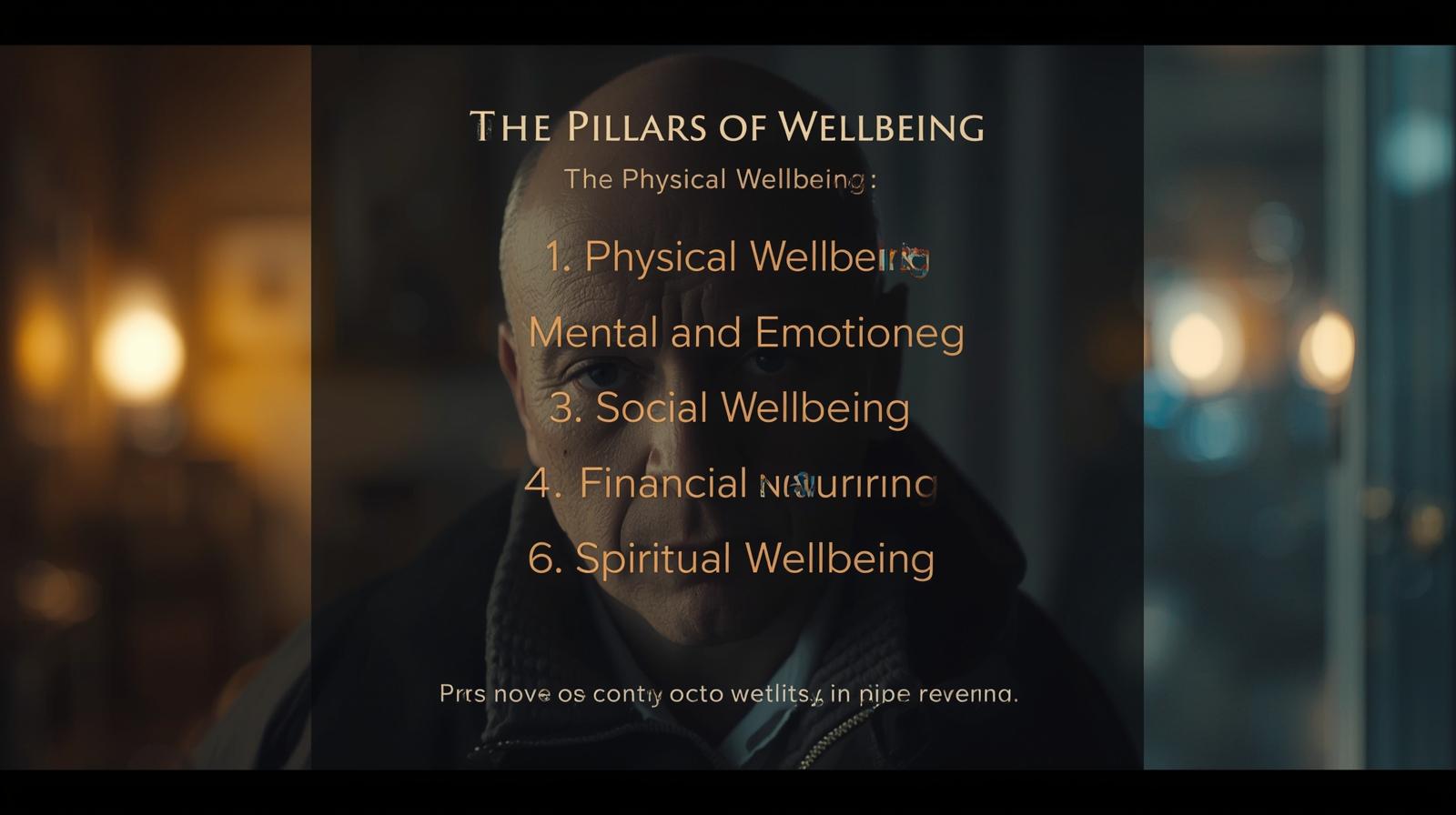
To build a lifestyle that harmonises work and personal life, it is essential to understand the foundations of wellbeing. These pillars provide the structure on which balance rests, and nurturing each area contributes to a healthier, more fulfilling life.
1. Physical Wellbeing
Good physical health is the cornerstone of overall wellbeing. Without it, productivity, focus, and enjoyment of life are compromised. Physical wellbeing involves more than the absence of illness; it is about maintaining energy, strength, and vitality through healthy habits.
- Exercise: Regular physical activity improves cardiovascular health, strengthens muscles, and boosts mood by releasing endorphins. Even simple activities such as walking or stretching can counteract the effects of sedentary work.
- Nutrition: A balanced diet rich in whole foods provides the fuel necessary for sustained energy and concentration. Overreliance on caffeine, processed snacks, or fast food may give short bursts of energy but lead to crashes later.
- Sleep: Quality sleep is vital for cognitive functioning, memory, and emotional regulation. Adults generally require 7–9 hours per night. Poor sleep hygiene — such as scrolling through phones before bed — can disrupt rest and leave individuals feeling drained.
2. Mental and Emotional Wellbeing
The modern workplace often creates mental strain, making this pillar particularly important. Mental wellbeing involves maintaining resilience, focus, and a positive mindset, while emotional wellbeing encompasses the ability to manage feelings effectively.
- Mindfulness and Meditation: Practices such as deep breathing, meditation, or yoga help calm the mind and improve emotional regulation.
- Stress Management: Setting realistic goals, taking breaks, and recognising limits are essential for reducing stress.
- Therapeutic Support: Counselling or therapy provides tools to manage anxiety, depression, or work-related challenges.
3. Social Wellbeing
Human beings are inherently social creatures. Strong, supportive relationships are linked to longer life expectancy, reduced stress, and greater happiness.
- Family: Prioritising quality time with family builds trust and emotional security. Shared meals, conversations, and activities strengthen bonds.
- Friendships: Maintaining friendships outside of work provides perspective and prevents feelings of isolation.
- Community Engagement: Involvement in community or volunteering activities fosters a sense of belonging and purpose.
4. Professional Wellbeing
While work can be a source of stress, it can also provide fulfilment and meaning when approached in a balanced way. Professional wellbeing means finding satisfaction and growth in one’s career without compromising other aspects of life.
- Purpose and Meaning: Feeling that one’s work contributes to a greater goal enhances motivation.
- Growth Opportunities: Continuous learning and professional development prevent stagnation and boost confidence.
- Workplace Relationships: Positive interactions with colleagues foster collaboration and reduce workplace tension.
5. Financial Wellbeing
Financial stress is a major barrier to balance. Struggling with debt or living paycheque to paycheque can create anxiety that spills into all areas of life. Financial wellbeing involves managing money effectively and planning for the future.
- Budgeting: Tracking expenses helps individuals live within their means.
- Saving and Investing: Building an emergency fund and planning for long-term needs creates security.
- Mindful Spending: Aligning spending with values (e.g., investing in health rather than unnecessary luxuries) supports a more balanced lifestyle.
6. Spiritual Wellbeing
For many, spirituality offers comfort, perspective, and meaning. Spiritual wellbeing does not necessarily mean religion; it can also be a sense of connection with nature, art, or a personal philosophy. Taking time for reflection, gratitude, or meditation can provide peace and grounding in a busy world.
Section 4: Strategies for Balancing Work and Wellbeing
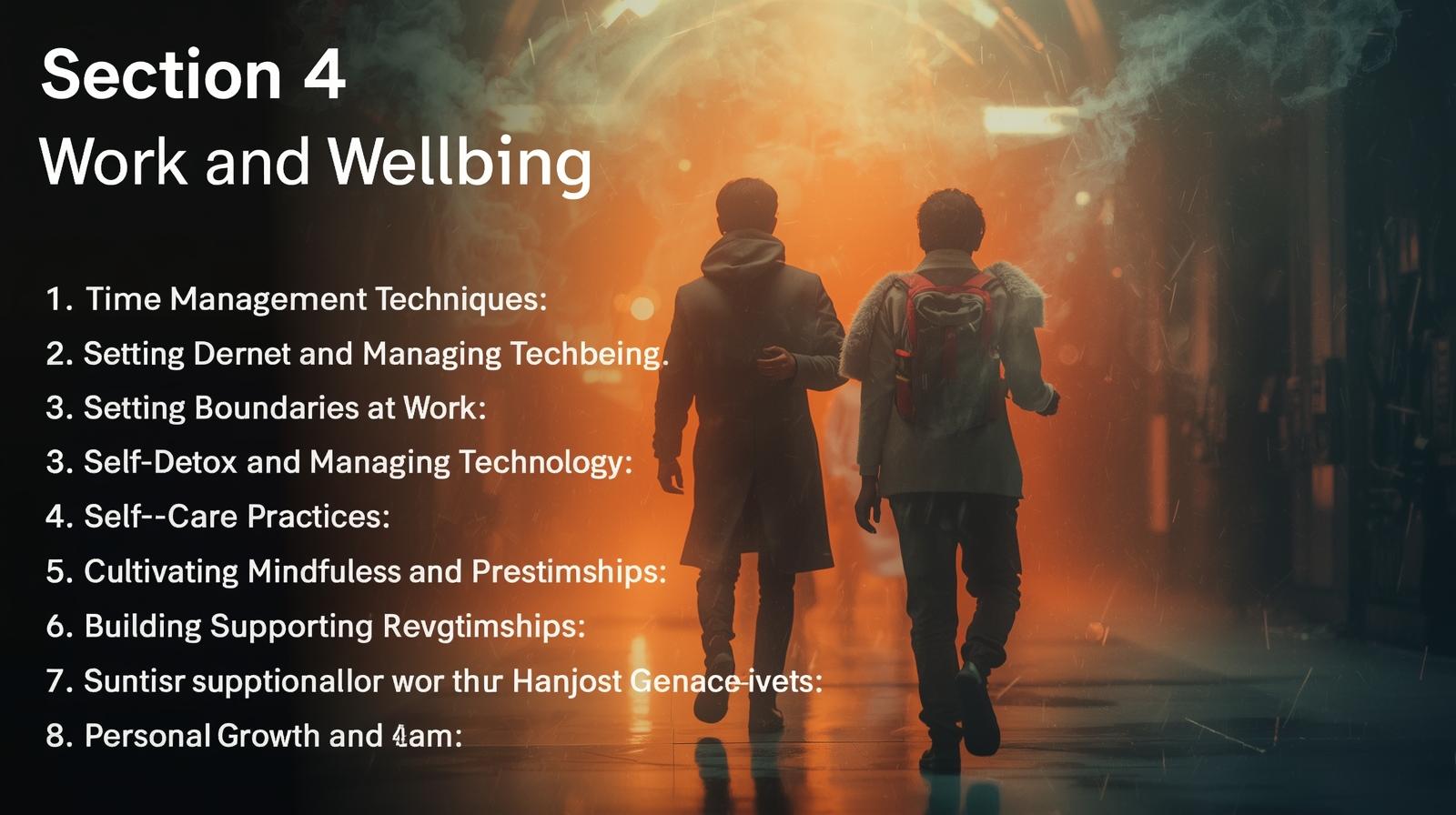
Achieving balance between work and personal life is not a one-time accomplishment; it is a continuous process that requires self-awareness, discipline, and adaptability. Different people will adopt different strategies depending on their circumstances, but there are universal principles that can help anyone move towards a more sustainable lifestyle.
1. Time Management Techniques
Time is the most valuable resource, yet it often slips away unnoticed. Effective time management allows individuals to handle work responsibilities efficiently while still leaving space for rest, family, and personal growth.
- Prioritisation with the Eisenhower Matrix: Tasks can be divided into four categories — urgent and important, important but not urgent, urgent but not important, and neither. This helps focus on long-term priorities rather than constantly reacting to crises.
- The 80/20 Rule (Pareto Principle): Often, 20% of tasks produce 80% of results. Identifying and focusing on high-impact activities prevents wasted effort.
- Batching Tasks: Grouping similar tasks, such as answering emails or making phone calls, reduces the mental cost of switching between activities.
- Using Technology Wisely: Calendar apps, reminder systems, and productivity tools can enhance efficiency. However, it is important not to become overwhelmed by overusing them.
Time management is not about filling every minute with activity; it is about creating space for what truly matters.
2. Setting Boundaries at Work
Boundaries are essential for maintaining a healthy separation between professional and personal life. Without them, work can easily spill into evenings, weekends, and even holidays.
- Defining Work Hours: Whether working in an office or from home, setting clear start and end times helps signal when it is time to switch off.
- Communicating Boundaries: Letting colleagues and managers know about availability ensures expectations are clear. For instance, stating that emails after 7 pm will be answered the following day prevents unnecessary stress.
- Physical Boundaries in Remote Work: Having a dedicated workspace at home allows for a mental shift between “work mode” and “personal mode.” Closing the laptop and leaving the workspace symbolises the end of the workday.
- Learning to Say No: Many people take on too much out of fear of disappointing others. Saying no to tasks that do not align with priorities is a vital skill for preserving balance.
Boundaries protect not just personal time but also professional performance by preventing burnout.
3. Digital Detox and Managing Technology
Technology is both a blessing and a curse when it comes to balance. While it allows remote work and flexible communication, it also keeps us tethered to our jobs around the clock. A digital detox — or at least careful management of technology — is essential.
- Scheduled Disconnect Times: Turning off devices during meals, family gatherings, or before bedtime promotes presence and rest.
- App Management: Limiting social media use with built-in screen time tools prevents hours from being wasted on endless scrolling.
- Mindful Notifications: Disabling non-essential alerts helps reduce distractions and maintain focus on meaningful tasks.
- Device-Free Spaces: Creating phone-free zones at home, such as bedrooms, encourages genuine relaxation and sleep quality.
Technology should serve as a tool rather than a master. Managing it wisely creates more opportunities for genuine connection and peace.
4. Self-Care Practices
Self-care is often misunderstood as indulgence, but it is a fundamental component of wellbeing. It involves deliberately taking actions that support physical, mental, and emotional health.
- Physical Self-Care: Regular exercise, balanced nutrition, and sleep hygiene form the foundation. Even small rituals, such as stretching after long hours at a desk, can make a big difference.
- Emotional Self-Care: Journaling, therapy, or simple relaxation techniques like listening to music help release stress and process emotions.
- Mental Self-Care: Reading, learning new skills, or engaging in creative hobbies stimulate the brain and prevent burnout.
- Recreational Self-Care: Fun activities such as travel, sports, or art bring joy and refresh energy levels.
Self-care is not selfish; it is necessary for showing up as the best version of oneself in both personal and professional roles.
5. Cultivating Mindfulness and Presence
In a world full of distractions, mindfulness offers a way to stay grounded. Being present allows individuals to enjoy each moment fully, whether working on a task, sharing time with family, or resting.
- Mindful Breathing: Taking a few deep breaths before responding to an email or attending a meeting reduces stress.
- Mindful Transitions: Pausing between work and personal activities helps create a mental shift. For example, taking a short walk after work can signify the transition to family time.
- Meditation Practices: Even five minutes a day can train the mind to focus better and manage stress.
- Gratitude Practices: Noting three things to be grateful for each day encourages a positive outlook.
Mindfulness nurtures balance by ensuring that individuals are not simply rushing through life but engaging meaningfully with it.
6. Building Supportive Relationships
Balance is not achieved in isolation. Having a network of supportive people makes it easier to maintain boundaries, cope with stress, and prioritise wellbeing.
- Family Support: Involving family members in conversations about workload and personal needs helps manage expectations.
- Peer Support at Work: Trusted colleagues can share challenges, collaborate on solutions, and reduce feelings of isolation.
- Mentorship: A mentor provides perspective on career development and strategies for balance.
- Professional Support Networks: Joining communities focused on wellbeing or professional growth can foster a sense of belonging.
A supportive network acts as both a safety net and a source of motivation.
7. The Role of Employers and Organisations
While individuals must take responsibility for their own wellbeing, employers also play a vital role in creating environments that support balance.
- Flexible Work Policies: Remote work options, adjustable hours, or job-sharing arrangements help employees tailor schedules to their needs.
- Wellbeing Programmes: Initiatives such as gym memberships, counselling services, or wellbeing days demonstrate that the organisation values its employees’ health.
- Reasonable Workloads: Clear expectations and realistic deadlines prevent overwork.
- Positive Culture: Encouraging open communication, recognition, and respect fosters a healthier environment.
Organisations that prioritise employee wellbeing often see increased productivity, lower turnover, and stronger reputations.
8. Personal Growth and Purpose
Finally, balance is not just about avoiding stress; it is about living a life aligned with values and goals. Personal growth and purpose give meaning to both work and leisure.
- Clarifying Values: Identifying what truly matters helps prioritise time and energy.
- Setting Goals: Balanced individuals set not only career goals but also personal ones related to health, relationships, or learning.
- Pursuing Passions: Hobbies or side projects provide joy and a sense of accomplishment beyond professional achievements.
- Continuous Reflection: Regularly reassessing priorities ensures that balance evolves as life circumstances change.
Living with purpose turns balance into more than just managing stress — it becomes a way of thriving.

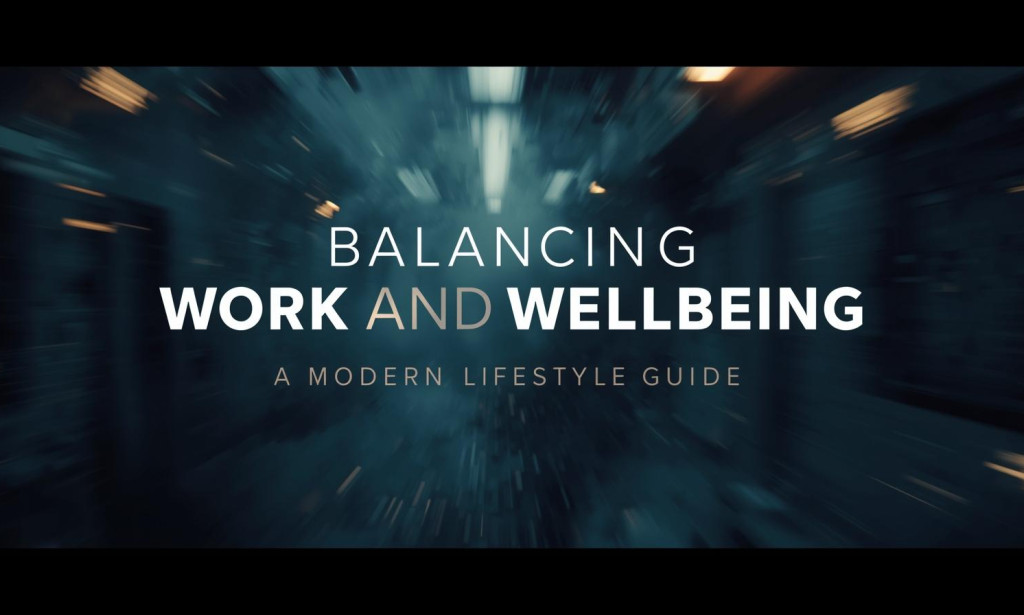

You must be logged in to post a comment.